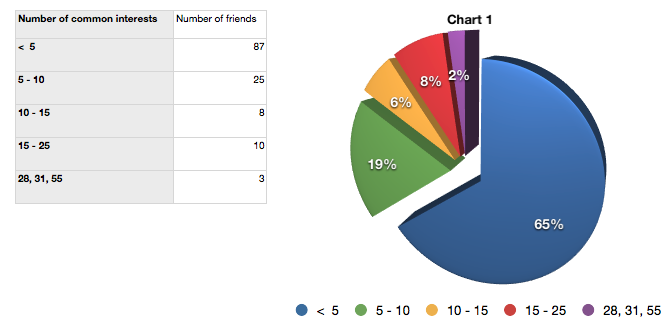In the previous post we analysed Facebook, which is not only the most widely used social networking site, but also a perfect example of why Hive will make a good change in the world of social networking.
As a user, one of the most annoying features of Facebook is the chaotic timeline. More importantly, the majority of posts on my timeline cannot attract much of my attention. Although Facebook provides relatively fine-grained control of your timeline, it requires much management effort. Ironically, most of my closest friends agree on this problem with me; therefore they choose to be ‘silent’ on Facebook most of the time. As a result, I barely see their shares and thoughts.
Relationships on Facebook are the reflection of offline relationships, and this is one of the reasons why Facebook has become so successful. However, colleagues or school mates don’t necessarily share interests with you. In other words, Facebook cannot connect you with other users who are similar to you.
In order to demonstrate this observation, I developed a tool to analyse “like” information from Facebook users during easter. By calculating how many common likes you share with your friends, I can validate my assumption on this topic. Moreover, I will be able to know the ‘taste distance’ between my friends and me quantitatively.
All of our 4 group members participated in the analysis and we had similar results: Many of ours friends share hardly any common interests with us. Two charts will be given showing two of the user’s friends networks and the number of common likes between their friends.
Chart 1 shows that 65% of that user’s friends share less than 5 interests in common. 84% of his friends share no more than 10 commons with him. Only 3 have more than 25 common likes – that’s only 2 percent of his friends.
Chart 2 shows another user’s result. He has much more likes than the previous user. But it still shows very similar pattern in the chart. 61% of his friends have less than 5 interest in common with him, and 76% percent of his friends have less than 10 common interests with him. Only a limited number of his friends share many common interests with him. There is a number which also draws attention, out of his 600 friends, 97 of them haven’t added any interest information on Facebook.
It is also noted that, many users indeed add their interest information on Facebook. Taking myself as an example, my friends add average 130 likes on their pages. On the contrary, a portion of our friends haven’t added any likes into their profiles.
In conclusion, the analysis has shown the previous assumption that Facebook is not a place where friendships are based on interests.
On the other hand, because Facebook is not interest-centric, it could have resulted in inaccuracy of this analysis. For example, a user likes The Beatles, The kinks and his friends can also simply state he likes music in 60s. Essentially, these two users have very similar music taste but the analysis is not able to reflect it.
This brings other topics such as information structure and granularity control which an interest-centric SNS should work on.


